Most grebe species are well known for feather-eating and the Western Grebe is certainly no exception. I’ve seen and photographed them gobbling down feathers multiple times. While the purpose of such behavior remains unproven it is suspected that the feathers enable more efficient digestion of fish bones and aid in removing digestive parasites. I’ve discussed this in further detail and provided more images of the behavior here.
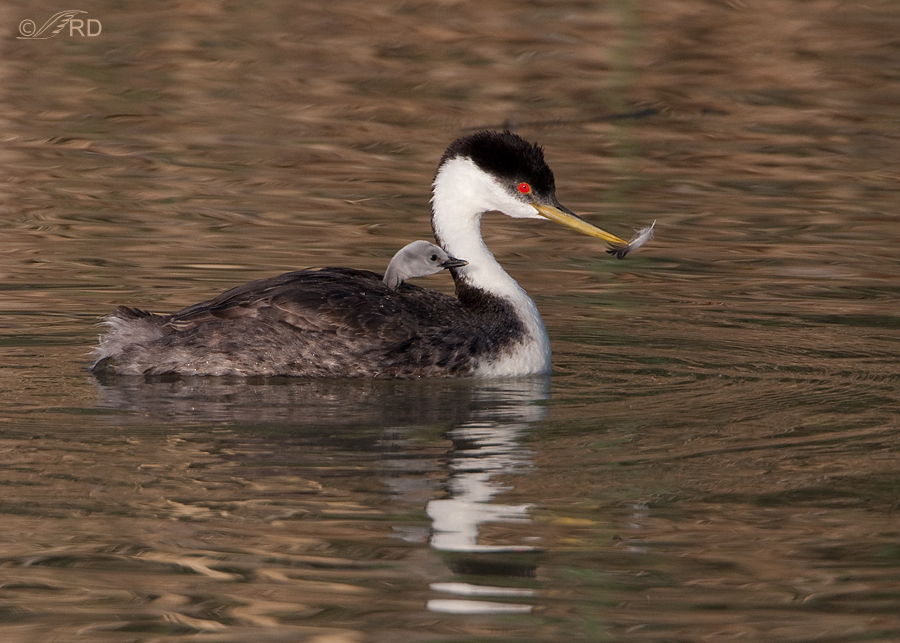
1/2000, f/8, ISO 500, 500 f/4, 1.4 tc
The feathers on their flanks and scapulars are in almost constant molt and when grooming dislodges them they are deliberately swallowed. Often, as was the case here, the feather is floating on the surface of the water and the grebe simply snatches it up as it floats by.
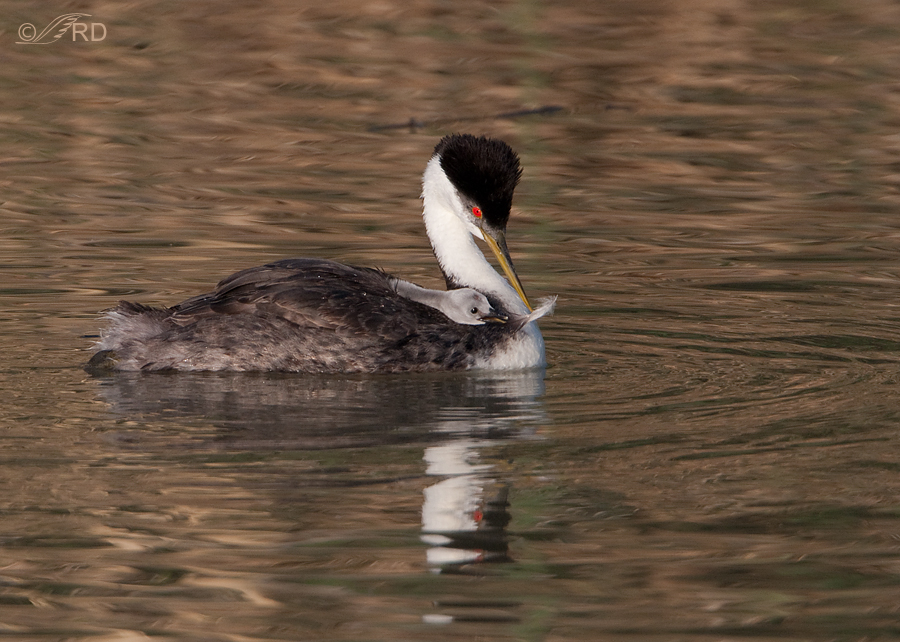
1/2000, f/8, ISO 500, 500 f/4, 1.4 tc
But this time the feather was fed to the chick on the back of the parent. Adults begin feeding feathers to their offspring on the first day of their lives. BNA reports that researchers have found over 300 feathers in the stomachs of individual chicks that were no more than three days old.
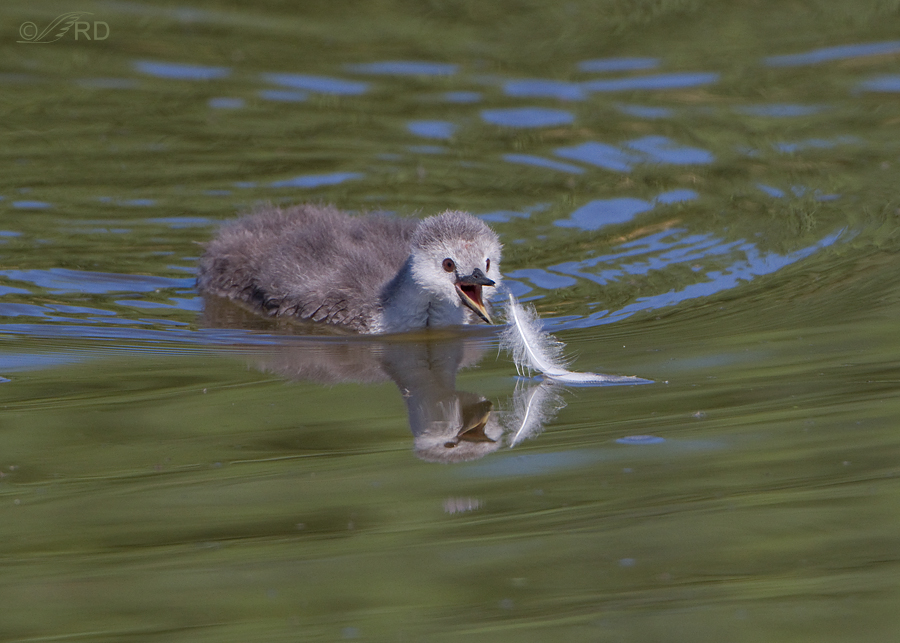
1/1600, f/7.1, ISO 500, 500 f/4, 1.4 tc
But of course not just any old feather will do. It must be small, soft and downy and without a stiff quill but apparently this is a lesson that the chicks must learn for themselves. As soon as the youngsters begin to make occasional forays off the backs of their parents and into open water they begin to experiment with feathers they find floating on the water. A few days ago I spotted this chick making a bee-line for a floating feather…

1/1600, f/7.1, ISO 500, 500 f/4, 1.4 tc
which it picked up…
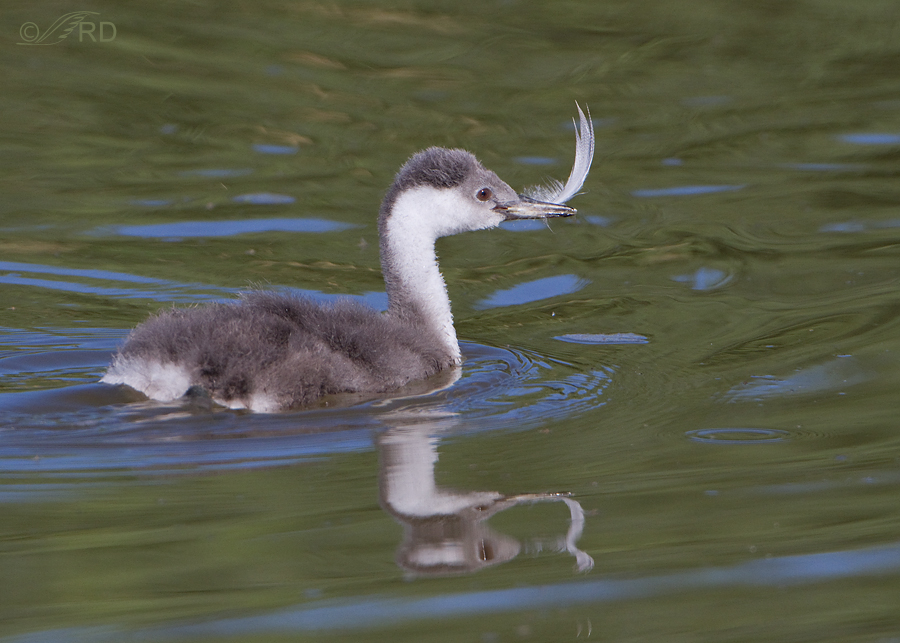
1/2000, f/7.1, ISO 500, 500 f/4, 1.4 tc
and “analyzed” for perhaps 5-7 seconds by manipulating it in its beak.
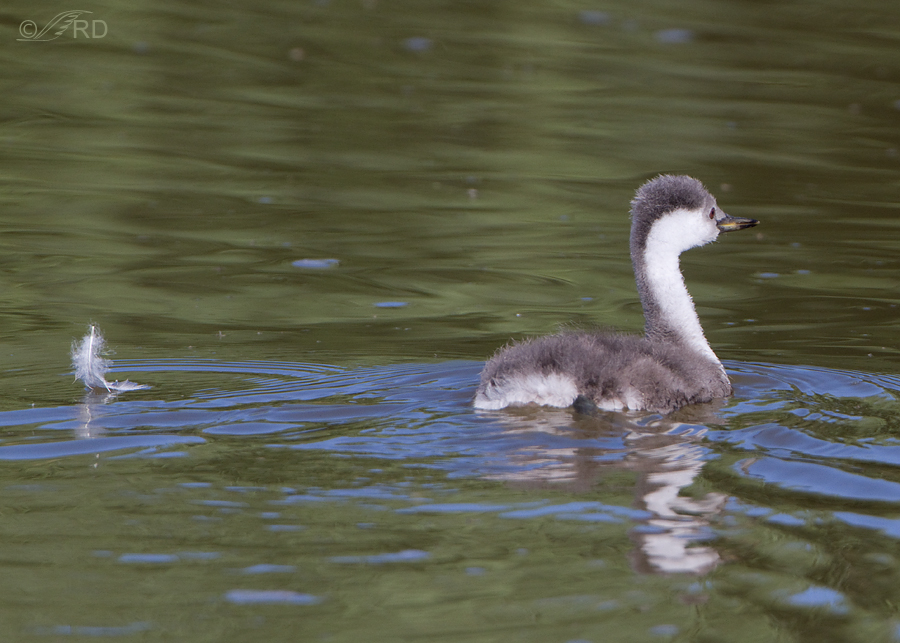
1/1250, f/7.1, ISO 500, 500 f/4, 1.4 tc
But ultimately the battered and bruised feather was rejected and I think I know why. This particular specimen was simply a bit too large and the quill too stiff, especially for such a young bird. It likely would have caused more problems than it would have solved.
This is the only time I’ve seen a grebe, adult or chick, reject a feather after picking it up. The adults seem know which feathers are appropriate for consumption – a lesson the youngsters apparently must learn through life experience.
Ron


Fascinating behavior. So glad a friend posted the link to your post about the plight of disturbed burrowing owls. I’m enjoying this blog tremendously (and have subscribed).
Hmmm. Very Interesting!
Once again, I learned something completely new from you and your amazing photos. One question: do they digest the feathers or do they regurgitate them at times? Like owl pellets?
Thank you Tana. I don’t know the answer to your question for sure. Here’s what BNA (out of Cornell) has to say on the subject in regard to the Western Grebe:
“Most feathers form ball in lumen of stomach, but some form plug at pyloric exit. Function not proven but thought to keep fish bones from injuring lining of stomach and reaching intestine or, as suggested by Piersma and Van Eerden (1989), to assist in the formation of pellets which can be ejected, eliminating indigestible material and a possible build-up of gastric parasites. Pyloric plug may reduce number of intestinal parasites, which are numerous”.
I assume that “assist in the formation of pellets” might mean that the pellets contain the feathers that were swallowed. That seems a little unclear to me though.
Hey Ron, the other day I was checking flammulated owl nest boxes and came across 2 with young flying squirrels inside. Both boxes had multiple blue grouse feathers inside. They were most certainly favored as a type of nest lining along with traditional grasses, but lining a stomach? That’s fascinating.
Thanks Mike. Very interesting (as per usual from you) about the flying squirrels and grouse feathers.
Ron, I can’t say it enough, the quality of your images is outstanding. Your blog is a great source of information and education for me. These grebes and their behavior are so interesting.
I hope you don’t mind that I linked todays’s post in my own blog to your blog. I really admire your work.
Thanks Andreas. And of course I don’t mind – actually I’m honored.
Fascinating! I learn so much from you as well as enjoying your excellent images and stories.
Thank you Susan. This ex-teacher appreciates such a comment.
Wow. GREAT photo sequence and super interesting info re: #feathers fed to baby chicks. I had NO idea. Tho’ I do know 1 of my 3 chickens LOVES feathers.
Thanks very much biobabbler. And I had no idea that some chickens eat feathers…